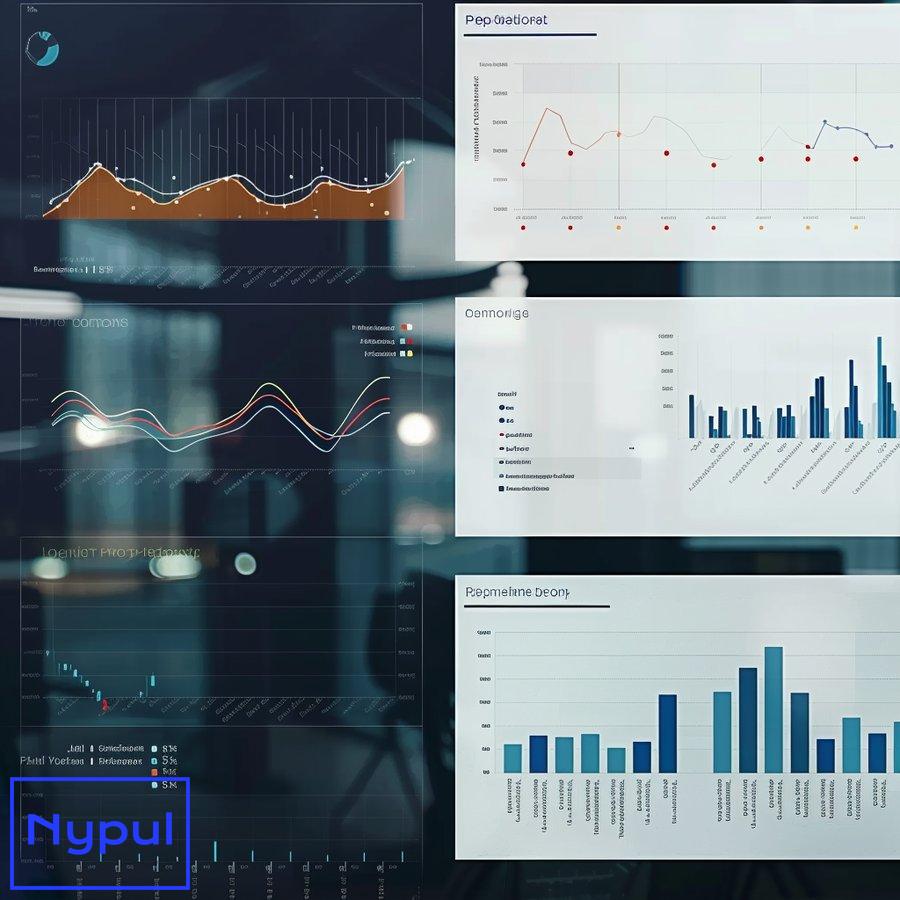What Is the Ability to Adapt to New Conditions
How do highly adaptable professionals approach challenges in the industry?

Highly adaptable professionals in the logistics and drayage sectors approach challenges with a proactive mindset, viewing obstacles as opportunities for growth and innovation. Their ability to pivot quickly in response to changing circumstances is a hallmark of their success.
Embracing Change
Adaptable professionals understand that change is inevitable, particularly in logistics, where factors such as regulations, technology, and market demands are constantly evolving. They embrace change by staying informed about industry trends and being open to new ideas and methods. This flexibility allows them to anticipate challenges rather than merely react to them.
Problem-Solving Mindset
When faced with challenges, these professionals employ a problem-solving mindset. They analyze situations critically, break down complex issues into manageable parts, and explore multiple solutions before deciding on the best course of action. This analytical approach not only helps in resolving immediate issues but also contributes to long-term strategic planning.
Collaboration and Communication
Adaptable professionals recognize the importance of teamwork in overcoming challenges. They foster open communication within their teams and with external partners, ensuring that everyone is aligned and informed. This collaborative spirit enhances problem-solving capabilities and allows for diverse perspectives to be considered when addressing challenges.
Continuous Learning
A commitment to continuous learning is another key characteristic of highly adaptable professionals. They actively seek out training opportunities, attend industry conferences, and engage in professional development activities. This dedication to self-improvement equips them with the latest knowledge and skills needed to navigate the complexities of the logistics landscape.
By integrating these approaches, adaptable professionals not only thrive amidst challenges but also inspire their teams to adopt similar mindsets, fostering a culture of resilience and innovation within their organizations.
What are the key steps in the adaptability process for logistics operations?
The adaptability process in logistics operations involves several key steps that enable organizations to respond effectively to changing conditions. Understanding these steps can enhance operational efficiency and resilience.

Assessment of Current Capabilities
The first step involves assessing current capabilities within the organization. This includes evaluating resources, technologies, workforce skills, and existing processes. By identifying strengths and weaknesses, organizations can pinpoint areas that require improvement or adjustment.
Identifying External Factors
Next, organizations must identify external factors that may impact operations. These factors can include market trends, regulatory changes, technological advancements, and customer demands. Staying attuned to these influences helps logistics teams anticipate potential disruptions.
Strategic Planning
Once internal capabilities and external factors are assessed, organizations should engage in strategic planning. This involves setting clear objectives that align with both current capabilities and anticipated changes in the environment. A well-defined strategy provides a roadmap for navigating challenges while remaining focused on long-term goals.
Implementation of Flexible Processes
Implementing flexible processes is crucial for adaptability. Organizations should design workflows that allow for adjustments based on real-time data and feedback. This flexibility enables teams to respond swiftly to unforeseen circumstances without compromising efficiency.
Monitoring and Evaluation
Finally, continuous monitoring and evaluation are essential components of the adaptability process. Organizations should regularly review performance metrics and assess the effectiveness of their strategies. This ongoing evaluation allows for timely adjustments and reinforces a culture of adaptability.
By following these steps, logistics operations can enhance their ability to adapt to new conditions while maintaining operational excellence.
How does adaptability benefit drayage operations and supply chain management?
Adaptability plays a critical role in enhancing drayage operations and overall supply chain management by fostering resilience, efficiency, and customer satisfaction.
Enhanced Resilience
In an industry characterized by unpredictability—such as fluctuating fuel prices or sudden regulatory changes—adaptability equips drayage operators with the tools needed to withstand disruptions. By being flexible in their operations, companies can quickly adjust routes or schedules in response to unforeseen events like traffic congestion or port delays.
Improved Efficiency
Adaptable drayage operations can streamline processes by leveraging technology and data analytics. For instance, real-time tracking systems enable operators to monitor shipments closely, allowing for immediate adjustments if delays occur. This proactive approach minimizes downtime and enhances overall efficiency within the supply chain.
Increased Customer Satisfaction
Customer expectations are continually evolving; therefore, adaptable supply chains can better meet these demands by offering personalized services or faster delivery options. By responding swiftly to customer feedback or changing market trends, companies can maintain high levels of customer satisfaction—a vital component for retaining business in a competitive landscape.
| Benefit | Description |
|---|---|
| Enhanced Resilience | Ability to withstand disruptions through flexible operations |
| Improved Efficiency | Streamlined processes via technology integration |
| Increased Customer Satisfaction | Meeting evolving customer demands through quick adaptations |
These benefits underscore the importance of cultivating adaptability within drayage operations as it directly correlates with improved performance across supply chain management.
What obstacles hinder adaptability in the logistics industry?

Despite its importance, several obstacles can hinder adaptability within the logistics industry. Recognizing these barriers is essential for developing strategies to overcome them.
Resistance to Change
One significant obstacle is resistance to change among employees and management alike. Many individuals may feel comfortable with existing processes and hesitate to adopt new methods or technologies due to fear of uncertainty or potential job loss. Overcoming this resistance requires effective change management strategies that emphasize communication and training.
Lack of Resources
Limited resources—whether financial, technological, or human—can impede an organization’s ability to adapt effectively. Smaller companies may struggle with investing in new technologies or training programs necessary for enhancing adaptability. Prioritizing resource allocation towards adaptability initiatives is crucial for overcoming this barrier.
Complex Regulatory Environment
The logistics industry operates within a complex regulatory framework that varies by region and sector. Navigating these regulations can be challenging; frequent changes may require organizations to adjust their processes continually. Staying compliant while remaining adaptable necessitates robust compliance management systems that facilitate agility without sacrificing adherence.
| Obstacle | Description |
|---|---|
| Resistance to Change | Employee reluctance due to comfort with existing processes |
| Lack of Resources | Financial or technological limitations hindering adaptation efforts |
| Complex Regulatory Environment | Challenges posed by varying regulations affecting operational flexibility |
Addressing these obstacles is essential for fostering an adaptable culture within logistics organizations.
How can organizations measure and assess adaptability in their logistics teams?
Measuring and assessing adaptability within logistics teams involves utilizing various metrics and evaluation methods that provide insights into team performance under changing conditions.
Performance Metrics Analysis
Organizations can analyze performance metrics related to operational efficiency, such as on-time delivery rates or inventory turnover ratios. A decline in these metrics during periods of change may indicate a lack of adaptability within the team.
Employee Feedback Mechanisms
Implementing regular employee feedback mechanisms—such as surveys or focus groups—can help gauge team members’ perceptions regarding adaptability within their roles. Understanding employee sentiment provides valuable insights into potential barriers hindering responsiveness.
Training Assessment Programs
Organizations should also assess training programs designed to enhance adaptability skills among team members. Evaluating participation rates, knowledge retention through assessments post-training sessions, and subsequent performance improvements can provide a clear picture of how effectively teams are being prepared for change.
| Assessment Method | Description |
|---|---|
| Performance Metrics Analysis | Evaluating operational efficiency indicators during changes |
| Employee Feedback Mechanisms | Gathering insights from team members on perceived adaptability |
| Training Assessment Programs | Assessing effectiveness of training initiatives aimed at enhancing skills |
By employing these measurement strategies, organizations can gain a comprehensive understanding of their logistics teams’ adaptability levels while identifying areas for improvement.
What strategies can enhance adaptability skills in drayage professionals?
Enhancing adaptability skills among drayage professionals requires implementing targeted strategies that foster a culture of flexibility and continuous learning within organizations.
Ongoing Training Programs
Organizations should invest in ongoing training programs that focus on developing critical thinking skills, problem-solving techniques, and technological proficiency among employees. These programs should be tailored specifically for drayage operations so that professionals are equipped with relevant knowledge applicable directly to their roles.
Mentorship Opportunities
Establishing mentorship opportunities allows less experienced employees to learn from seasoned professionals who have navigated various challenges successfully. Mentorship fosters knowledge transfer while encouraging a culture where seeking guidance is valued—ultimately enhancing overall team adaptability.
Encouraging Innovation Initiatives
Encouraging innovation initiatives empowers employees at all levels to propose new ideas or solutions for improving existing processes within drayage operations. Creating an environment where experimentation is welcomed promotes creative thinking while reinforcing employees’ sense of ownership over their work—key elements necessary for enhancing adaptability skills.
| Strategy | Description |
|---|---|
| Ongoing Training Programs | Investing in continuous education focused on relevant skills |
| Mentorship Opportunities | Pairing experienced professionals with less experienced employees |
| Encouraging Innovation Initiatives | Fostering an environment where new ideas are welcomed |
Implementing these strategies will not only enhance individual skills but also contribute positively towards building an adaptable organizational culture overall.
How have successful companies adapted to major disruptions in drayage?
Successful companies have demonstrated remarkable resilience by adapting effectively during major disruptions in drayage operations through strategic planning and innovative practices.

Case Study: XYZ Logistics During COVID-19 Pandemic
XYZ Logistics faced unprecedented challenges during the COVID-19 pandemic when supply chains were severely disrupted due lockdowns globally affecting transportation routes significantly; however:
- Diversification of Supply Sources: The company diversified its supplier base by seeking alternative sources both domestically & internationally which mitigated risks associated with relying solely on specific suppliers.
- Investment In Technology: They invested heavily into digital tools such as real-time tracking systems enabling better visibility across shipments allowing quick adjustments based upon changing circumstances.
- Enhanced Communication Channels: By establishing enhanced communication channels between teams & customers they ensured transparency throughout each phase ensuring trust remained intact even amidst uncertainty.
Through these measures XYZ Logistics not only survived but thrived post-pandemic showcasing how proactive approaches towards disruption lead towards success ultimately benefiting stakeholders involved collectively!
Successful adaptation stories like this illustrate how strategic foresight combined with innovation ultimately drives success amidst adversity proving that flexibility remains paramount within today’s ever-evolving landscape!
By understanding how successful companies navigate major disruptions effectively serves as inspiration encouraging others within industry strive towards similar outcomes fostering growth opportunities ahead!






